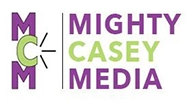
Now that I have, for my sins, been tagged as a patient engagement expert, I figure that entitles me to the occasional rant on the topic of the healthcare system – particularly the US iteration thereof – and its utter inability to understand how to connect and communicate effectively with its customer base: patients.
If you’ve been a patient, for anything beyond a short trip to your primary care doc for something simple (and easily diagnosed) like a laceration or a minor infection, you know that arriving at the doors of The Medical-Industrial Complex is like being the new kid in school.
There’s an old joke about bacon and eggs – the chicken is involved, but the pig is committed. In the ongoing sketch comedy/Shakespearean tragedy that is medical care. the clinical teams who deliver care, and the facilities in which they deliver it, are most certainly involved. Patients? We’re fully committed. We are engaged, we are fully present. What we’re not getting from the delivery side is an authentic invitation to engage.
en•gage•ment: noun, a formal agreement, i.e. to get married; an arrangement to do something at a specific time; the act of being engaged, i.e. “continued engagement in trade agreements”
Seems simple, right? Patient appears, asking for care. Clinical professionals deliver that care. Patient happy, clinicians happy, everybody wins. Oh, wait – did the doctor wash her hands before she started the physical exam? If the patient is aware of the importance of handwashing in preventing infection, and asks if the doctor lathered up and rinsed according to protocol, does that patient risk being labeled “difficult” or “aggressive”?
If so, so much for patient engagement. Given that the statistics on handwashing in healthcare settings aren’t at 100% (~ 90% for RNs, < 75% for attending MDs in a 2008 study at an Ohio hospital), clinical folks are as non-compliant as the patients they slap that label onto.
Then there’s the whole medical records dance. I got so sick of filling out health history forms that I said, out loud and online, that I’d get a barcode tattooed on my neck if it meant I never had to fill out another one. Even if you’ve been to a practice countless times before, you’ll likely have to fill one out EVERY. TIME. you have an office visit. Then, if you actually want to SEE your health history – the one contained in the electronic health record (EHR) system, hospital or office, or even the old school paper version – it’s like petitioning the Vatican for a dispensation: begging, more paperwork, and the forking over of cash money.
[Side note: I did tattoo my medical history on myself – not a barcode on my neck, but a QR code on my sternum. It’s visible online as my Twitter avatar – without the password that opens the page, of course.]When you need medical care, you want to know what your treatment options are. Your doctors should be using a shared decision making approach, where they outline the options and possible outcomes of each one. They also should be able to provide you with COST impacts of the various options, but they don’t – usually because they can’t, since the array of insurance plans they take don’t make cost/price information easy to find.
We can thank what I call “stupid payer tricks” for the opacity of the money side of medical care delivery. Cost – the reimbursement numbers for physicians and facilities, along with the patient co-pay numbers – is considered “proprietary negotiated rate information” that’s the property of the insurance company. They dole it out in drips, only AFTER the bill has been submitted. Imagine buying a car, or a house, and signing the sales contract with no price on it, while being told that the bill will arrive in 60/90/120 days, and that’s what you’ll have to pay.
Hard to engage with something like what’s outlined above, isn’t it?
Add to all this the perception by the people who aren’t regular users of the healthcare system that healthcare is something that happens “over there, to sick people, but not to me,” and you have a complete lack of system literacy for healthy folks. Until, of course, they wind up at the hospital door with “a thing” – a car wreck, cancer – when they have to navigate new territory while sick, and in pain, without a map.
What’s needed here is not another earnest academic study from the health-system side, examining how to drive patient engagement. What we need is a grassroots-led effort, by expert patients who have created maps navigating the “new territory” mentioned above, to work with the doctors, nurses, administrators, data geeks, and scientists who recognize the need to flip the patient engagement paradigm from top down – Ivory Tower Rules – to bottom up: built with patients.
Let patients help.



